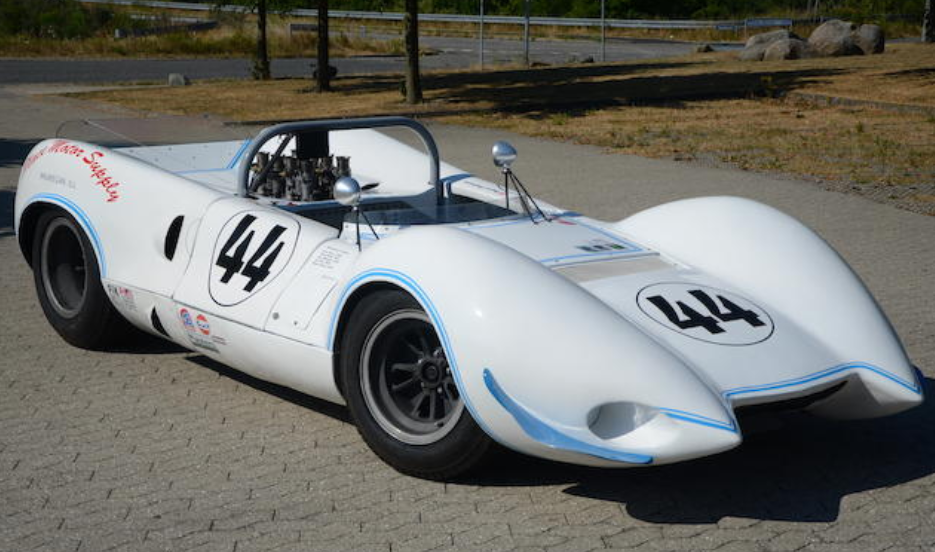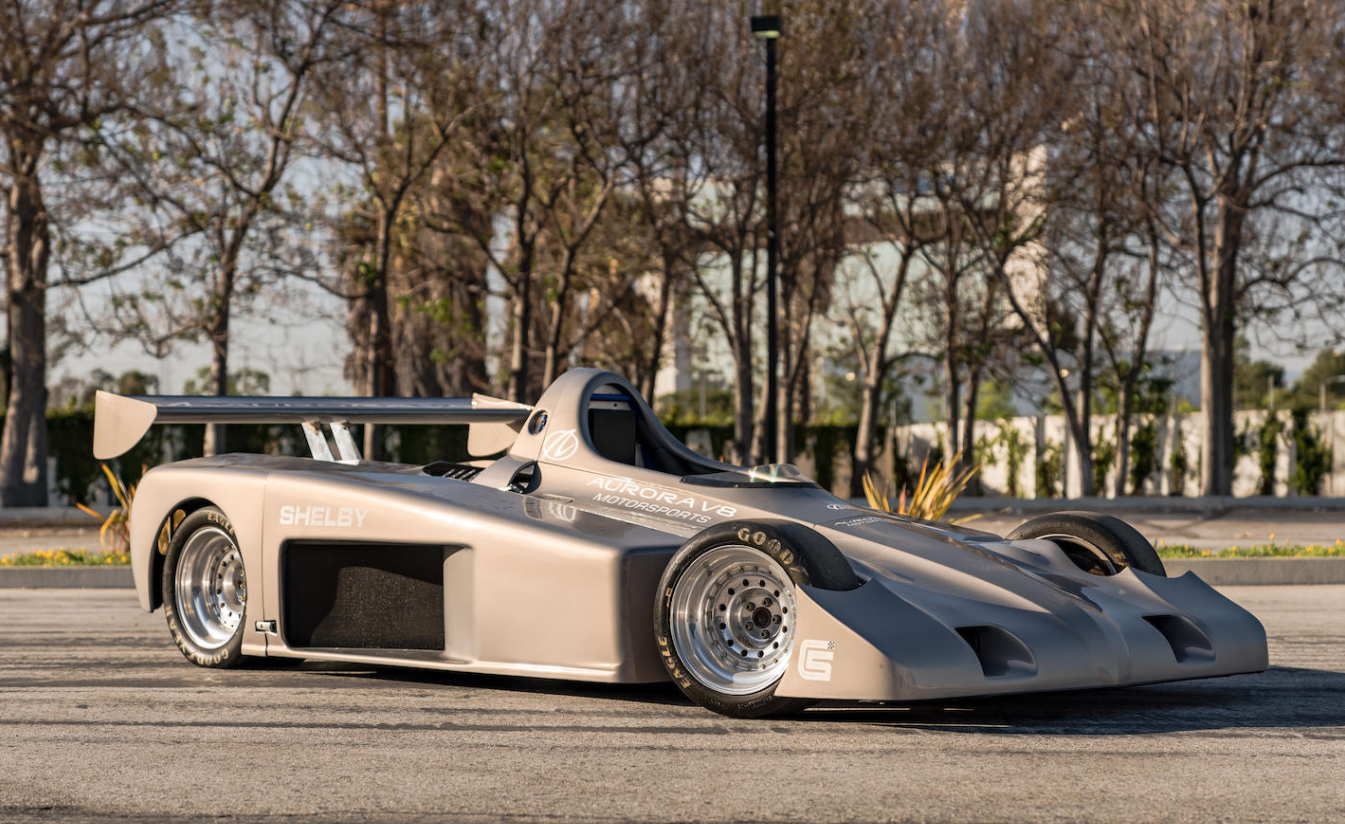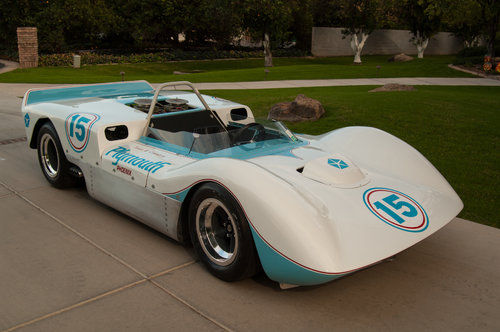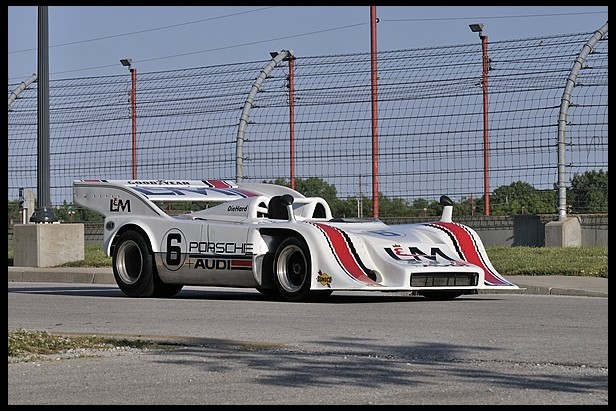1973 Porsche 917/30 Can-Am Spyder
Offered by Gooding & Company, Amelia Island, Florida, March 9, 2012
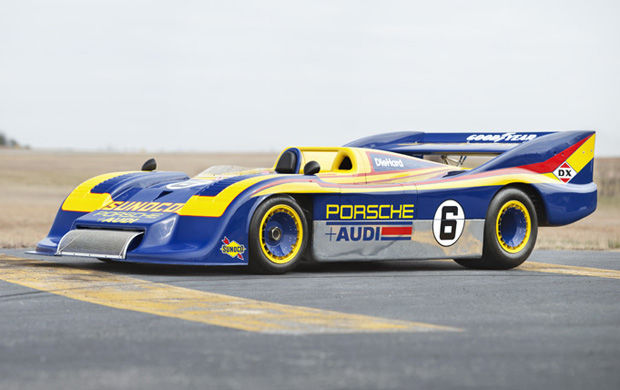
Photo – Gooding & Company
Every once in a while a car comes up for sale that, basically, makes you yell “Holy crap!” and drop your sandwich and the plate it sat on. The plate falls in slow-motion and shatters on the floor. Complete spit-take. Like a car that you think only the manufacturer owns and sits in their private museum and will never be sold. Except that it’s apparently up for sale. This is one such car.
This is the “Can-Am Killer” – a car so dominant that it drove the series in which it competed into extinction. Nothing could keep pace with this monster of a race car. It is the most powerful road-racing car ever built. Its 5.4-liter twin-turbocharged Flat-12 produced about 1,200 horsepower. During qualifying sessions in the 1973 season, the turbos were turned up to full boost, pushing power output closer to 1,600. It weighed 1,800 lbs – so we’re talking sub-2.0 second 0-60 mph times. The car’s dominance, in conjunction with other factors, led to the demise of the Can-Am series.
This particular car (chassis #004) is painted in period-correct Penske Sunoco livery, although it was not one of the cars campaigned by Roger Penkse in the Can-Am series. It was supposed to be, however. In fact, Mark Donohue was supposed to drive this car in 1974 but because Can-Am more or less banned the 917/30 from competition (through rules changes), the car’s build was halted but eventually completed and sold new to Alan Hamilton, the Australian Porsche importer. Porsche then later re-acquired the car for somewhere around $2 million in 1991.
This is one of six (6) Porsche 917/30s built. Two of them are owned by Porsche. It is the most dominate of all racing cars and the ultimate version of the 917, which itself was a line of super-successful racing cars. It’s pre-sale estimate is $3,250,000-$4,000,000. What a rare opportunity. The complete catalog description can be found here and the entire Gooding catalog can be seen here.
As a side note, I recently learned (via a 30 minute TV comedy) that you’re supposed to wear blue and yellow on Leap Day, so this car is quite appropriate. Happy Leap Day!
Update: Sold $4,400,000.
Update II: Sold, Gooding & Company Amelia Island 2016, $3,000,000.


